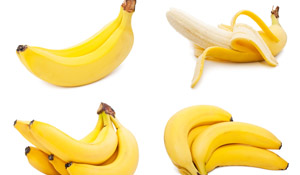
Do you get enough potassium? You need this mineral for various functions, including the building of proteins and muscle, and, according to a new study published in Stroke, high potassium intake may lower the risk of ischemic stroke in older women.
Ischemic stroke, the most common form of stoke, is the result of an obstruction, or clot, in a blood vessel that leads to the brain. Close to 800,000 strokes occur in the US annually, making it the fourth leading cause of death and the culprit behind "more serious long-term disabilities than any other disease," according to the National Institutes of Health’s National Institute of Neurological Disorders and Stroke (NINDS).
The Latest Research on Potassium and Stroke Risk
While potassium has been associated with a reduced risk of stroke for some time, there has been little research on the effects of dietary potassium on different types of stroke. In addition to ischemic stroke, there’s also the less common hemorrhaghic stroke, which occurs when a blood vessel in the brain ruptures and bleeds.
Recently, a research team led by Sylvia Wassertheil-Smoller, PhD, a professor in the Department of Epidemiology and Population Health, and Arjun Seth, both at the Albert Einstein College of Medicine in New York, found that not only is high potassium intake linked with a lower risk of stroke, especially ischemic stroke, but it’s also associated with a lower risk of death from all causes in older women, particularly in those who don’t have high blood pressure.
Potassium Intake, Blood Pressure, and Stroke Prevention
Researchers analyzed data on more than 90,000 women aged 50 to 79 from the Women’s Health Initiative Observational Study. The women were then split into two groups: those with high blood pressure, and those with blood pressure in the normal range. Then the investigators analyzed data on dietary potassium intake and stroke risk. They found that in total, women who consumed more than 3,193 mg of dietary potassium a day had a 12% lower risk of stroke, compared with women consuming less than 1,925 mg.
In women with normal blood pressure, those who consumed more potassium had a 27% lower risk of ischemic stroke. Among women with high blood pressure, higher potassium intake was associated with lower risk of death from all causes, but not stroke.
"We looked at hypertensive and non-hypertensive women separately because we wanted to see if potassium effects were relevant to those who were normotensive [normal blood pressure levels] and before they might develop hypertension," explains Wassertheil-Smoller. "Also, we wanted to see if potassium effects were independent of blood pressure and hypertension status. For example, were there any effects beyond what effects there might be on blood pressure? We found that, yes, potassium intake had beneficial effects independent of any potential blood pressure effects."
10 Foods High in Potassium
The recommended dietary intake for potassium for adults aged 19 and older is 4,700 mg a day, according to the U.S. Department of Agriculture. Only 2.8% of the study subjects met or exceeded the recommendation. According to Wassertheil-Smoller, in the study, as in the American public in general, the dietary potassium intake was about 2,600 mg per day.
Wassertheil-Smoller says that increasing dietary potassium—even if you don’t reach the USDA’s recommended levels—still reduces the risks of stroke and death. "About a quarter of our population had intakes below 1,925 mg., but we found beneficial effects among those whose intakes were above 2,000 mg."
"Potassium may counteract the effects of high sodium [salt] intake," she adds. "We believe it may improve endothelial [the inner lining of the blood vessels] function, but the actual mechanism is still unknown." What is known: which foods are high in the mineral. Here, a list of 10 potassium-rich foods to add to your plate:
- 1 medium baked potato (with skin), 926 mg.
- ½ cup dried plums (prunes), 637 mg
- 6 oz. prune juice, 528 mg
- 1 medium banana, 422 mg
- 6 oz. tomato juice, 417 mg
- ½ cup raisins, 598 mg
- ½ cup cooked, cubed acorn squash, 448 mg
- ½ cup cooked lima beans, 485 mg
- ½ cup cooked spinach, 420 mg
- 6 oz. orange juice, 372 mg
Sylvia Wassertheil-Smoller, PhD, Department of Epidemiology and Population Health, Albert Einstein College of Medicine, reviewed this article.
Sources
Wassertheil-Smoller, Sylvia. Email message to author. September 26, 2014.
Arjun Seth, Yasmin Mossavar-Rahmani, Victor Kamensky, Brian Silver, Kamakshi Lakshminarayan, Ross Prentice, Linda Van Horn, and Sylvia Wassertheil-Smoller. "Potassium Intake and Risk of Stroke in Women With Hypertension and Nonhypertension in the Women’s Health Initiative." Stroke 45 (2014): 2874-2880. Published online before print September 4, 2014, doi: 10.1161/STROKEAHA.114.006046
"Potassium in Diet." U.S. National Library of Medicine and National Institutes of Health. Updated June 23, 2012.
"Know Stroke." National Institutes of Health/National Institute of Neurological Disorders and Stroke. Page accessed November 6, 2014.
"Micronutrient Information Center: Potassium." Linus Pauling Institute. Oregon State University. Updated December 2010
"Hemorrhagic Strokes (Bleeds)." American Heart Associaton/American Stroke Association. Page last reviewed November 7, 2013.





